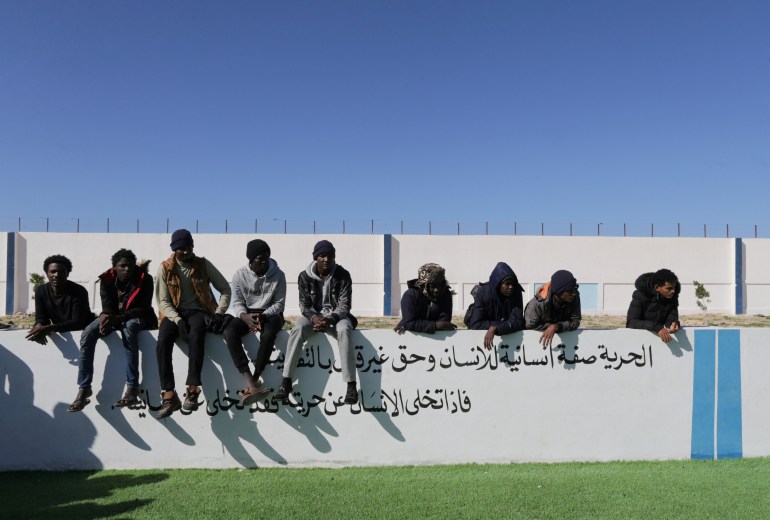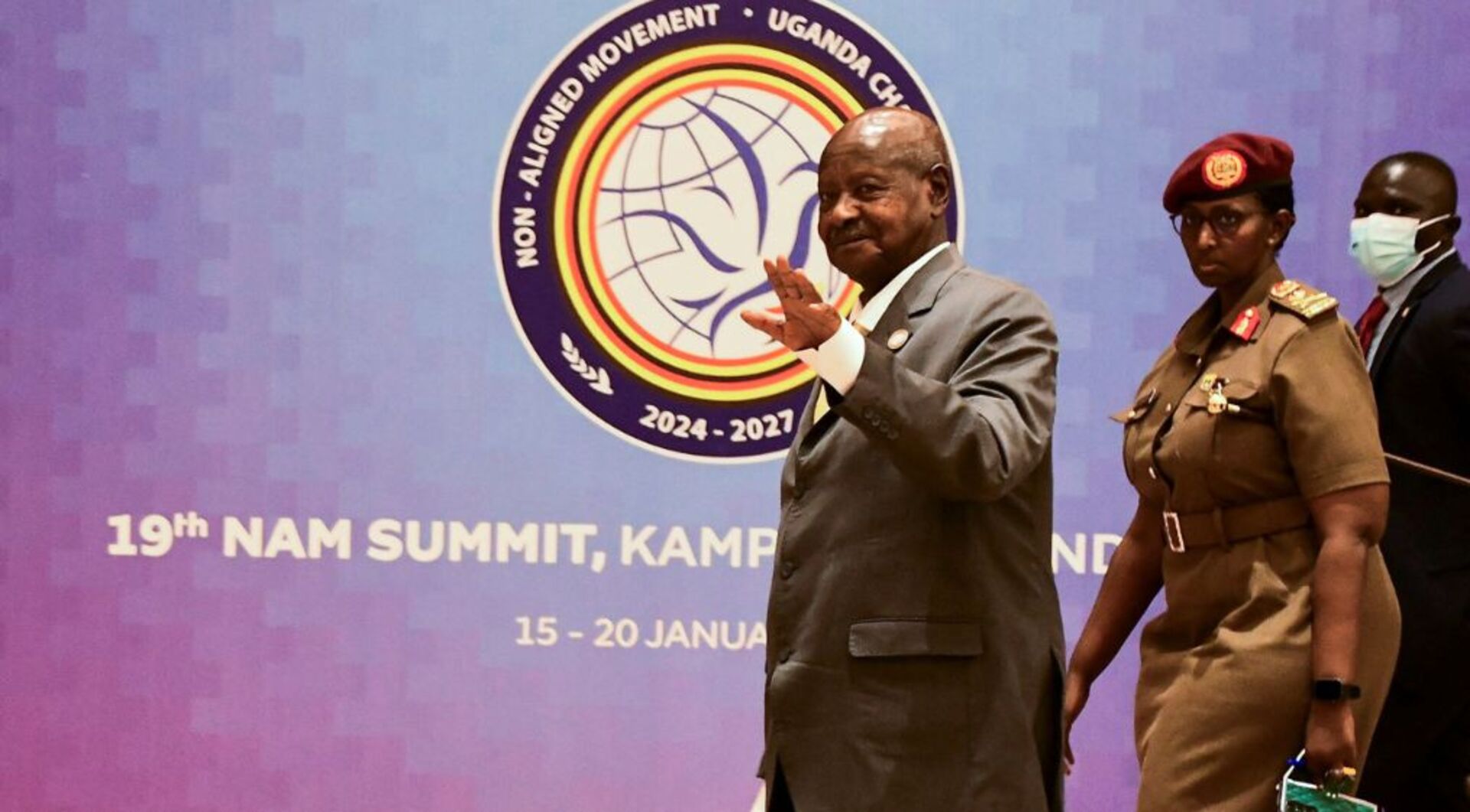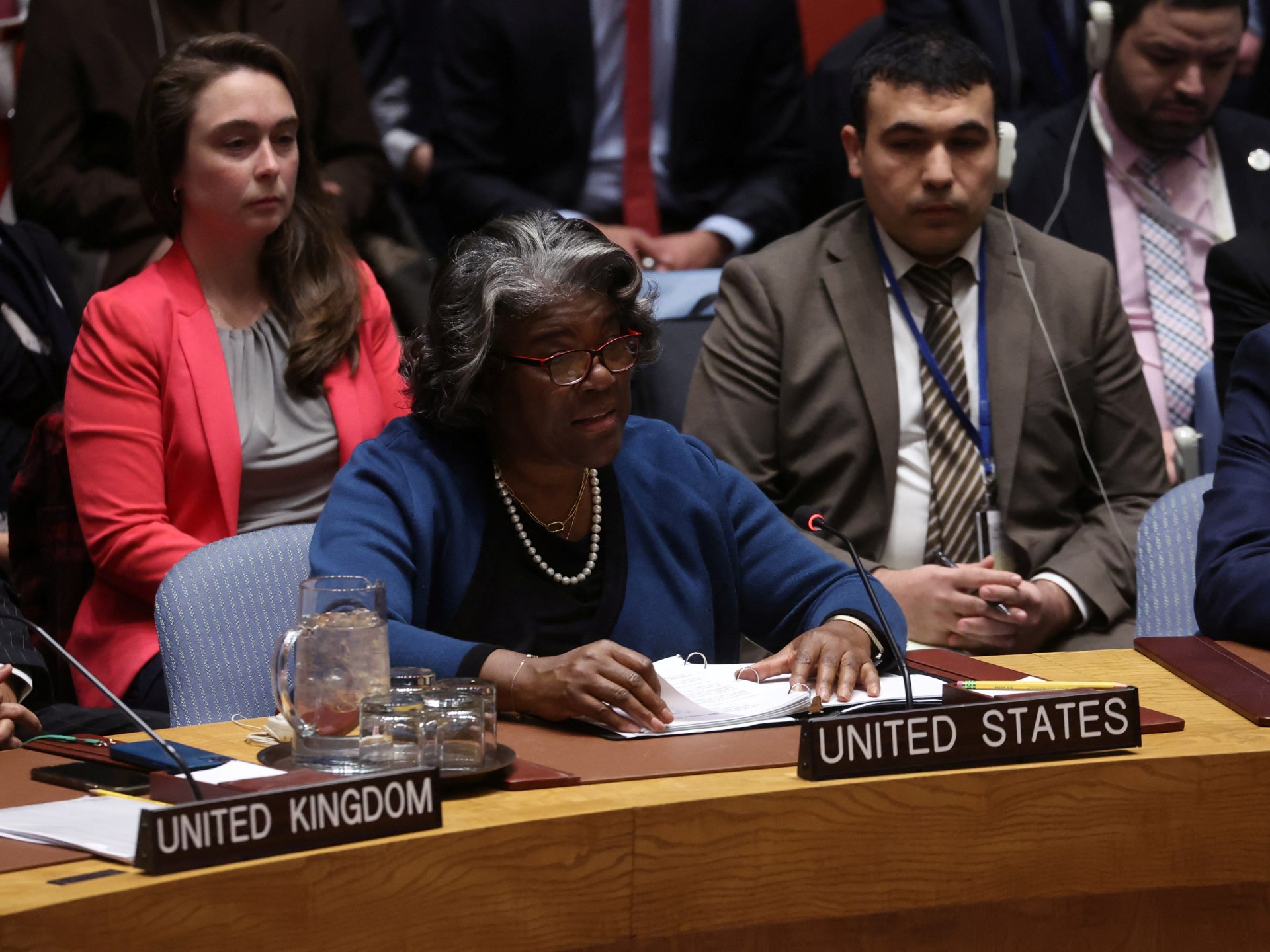‘I will die trying’: Gambian migrant deportees dream of return to Europe | Migration News
Banjul, the Gambia – Ten years ago, Alagie’s life in Banjul wasn’t easy. Still, he had both his parents, a wife, a home, and a dream of making a better life for them all in Europe.
Now the 34-year-old, who asked that his full name not be used to protect his privacy, has lost much of what he had.
Alagie left the Gambia in 2014, taking the irregular “backway” to Europe before he was forcibly returned eight years later.
“I wanted the best for my wife and future children,” he told Al Jazeera about his decision to leave, looking sadly at the wedding photo on his wall.
Although still married, he cannot afford to support his wife and their 10-month-old baby, forcing her to return to her parents’ home.
“My wife loves me deeply,” he said. “If it weren’t true love, she would have divorced me and moved on.”
When Alagie first left for Europe, he travelled to Morocco by boat, then smuggled himself by land through Algeria, Tunisia and Libya, before crossing the Mediterranean towards Italy.
The difficulties started almost immediately. “Many migrants I travelled with from Libya – mostly from Mali, Nigeria, and a few Gambians – drowned. I was among the few lucky ones who made it to Italy,” he said.
Landing in Italy in 2015, he was immediately placed in a refugee camp for several months. “The easy life I imagined in Europe was nothing like the harsh reality I faced in Italy.”
Desperate, Alagie decided to smuggle himself to Germany with others from Senegal, Niger and Nigeria. They thought they would find better opportunities, but after crossing the border, they were picked up by German authorities and sent to another refugee camp.
“It was like jumping from the frying pan into the fire. We were packed like sardines, isolated from cities and any social life.”
Later, Alagie found work as a petrol station attendant, the same job he held back in the Gambia. He’d send money home to his family every other month while striving to secure asylum.
“Life there was hard, but living in the Gambia is far worse than even the refugee camps,” he said, preferring the hardships in Europe.
But Alagie’s days in Europe were numbered. One day in September 2022, while he was making breakfast in the small house he rented with other migrants, plainclothes German police officers burst in. “They handcuffed me like a criminal and held me in a [refugee] camp for two months before putting me on a flight back to the Gambia,” he said.
Upon arrival in Banjul, he was left with no money or support. “I came home empty-handed, to an empty country.”
Migration and return
Irregular migration has long been an issue in the Gambia, with many young people – driven by poverty – risking their lives to get to Europe in search of better opportunities.
More than 35,000 Gambians arrived in the European Union between 2015 and 2022, according to Frontex, the EU border control agency. During peak periods, some 7,000 Gambians attempted to migrate annually, driven by dire political and economic conditions.
Under the 1996-2017 regime of President Yahya Jammeh, many people fled autocratic rule and were granted asylum in the West due to political repression. Since the transition to democracy in 2017, more asylum applications from Gambians have been rejected compared to before, as the country is considered more stable.
There has also been increased cooperation between the Gambian government and the EU on migration management, including the “Good Practice Agreement”, which outlines procedures around the return of migrants.
Since 2017, more than 5,000 Gambians have returned, according to the International Organization for Migration (IOM). Some are deportees, but most are voluntary repatriations, the IOM said. Some returned because of the severe hardships they encountered in Europe, while others had been stranded in Libya, never making it across the Mediterranean to begin with.
Among the Gambians who leave, many say the dire social and economic conditions make them determined to risk the crossing.
The Gambia suffers from high youth unemployment, at around 41 percent – a driving force behind irregular migration. The economy, which is heavily dependent on agriculture and tourism, also depends on remittances from Gambians abroad. According to World Bank data, remittances accounted for around 26 percent of the gross domestic product (GDP) in 2023.
Like many other migrants, Alagie’s parents supported his decision to leave through irregular routes, hoping he would change their lives for the better. Sadly, both passed away while he was abroad, leaving him with a deep sense of regret.
“They died while I was away, without me making their lives better,” he lamented.

‘I thought Europe would be different’
Alagie’s migration journey is echoed in conversations with other people around Banjul.
Musa Faye is in his early 60s. He first left the Gambia at age 38, eventually making it to the United States, where he lived for two decades until he was deported in 2017.
“Life in the Gambia seemed better back then,” he reflected. “Now, it’s a disaster – nothing is functioning, and the country is in a dire state.”
Faye left behind a wife and three children in the Gambia, with the hope of making enough money to take them to the US – but it never panned out.
“There are no jobs in Gambia; people suffer every day,” the taxi driver said. “I did the same job in America, but here it’s a nightmare. At my age, I should be thinking about retirement, but that’s not an option.
“The American dream didn’t turn out as I had hoped,” he said, “but it’s still far better than life here.”
The allure of life abroad, often amplified by social media, drives many to risk perilous journeys in search of a better life.
Rohey, who did not want to disclose her surname to maintain anonymity, was seduced by the glamorous images she saw posted on social media by a high school friend living in Italy.
“I thought Europe was like jannah [paradise]. Seeing her posts made me think, ‘This is the life I want, too,’” the 36-year-old salon worker said.
So she embarked on the risky journey in 2010, arriving in Libya in 2011, just as the civil war erupted. That’s when her “nightmare” began.
“I was raped multiple times and forced into hard labour without pay,” Rohey said.
Still, she wanted to continue, eventually paying smugglers to cross the Mediterranean to Italy. “I had to hide some money in my pants just to afford the journey.”
In Italy, she worked as a hairdresser but found life far from the paradise she had envisioned. “I thought Europe would be different – easy money and a good life. I was wrong.” Her room was a tiny, leaking space she describes as a “hell”.
Back in the Gambia since 2019, Rohey works in a salon just outside Banjul. “The salon is almost always empty. Sometimes I walk 6km [4 miles] home because I can’t even make enough for transport fare,” she said.
Rohey considers her return a form of “voluntary deportation”, saying that many migrant women are forced into prostitution – a fate she refused to accept, so she left. “I would rather return to the hardship in my home country than engage in prostitution,” she said.

Years of travel
The road migrants travel to reach their imagined better life abroad is almost always an arduous one, and the journey sometimes takes years.
Ousman Jobe, now 44, first ventured across the Sahara in 1998 at just 18. His journey from the Gambia to Morocco took four gruelling years. “We drove through the Sahara Desert, sometimes covering over 1,000km [620 miles] before seeing another country,” he remembered.
Jobe travelled with more than 40 Gambians in a truck, some as young as 15, including women and children. The journey was perilous. “We ran out of water, and we had to drink our urine or have someone else urinate in our mouths because we had none left,” he said.
The harsh conditions claimed many lives, mostly from Senegal and Mali. As the eldest, Jobe was responsible for burying them. “We buried them in mass graves or sometimes just left their bodies.”
There were other dangers, too. “[Criminals] stopped us on the way to Algeria through Morocco, forcefully taking the men’s money while raping the women in front of us,” he said. “It was devastating to witness, but we were helpless.”
Jobe left the Gambia because he “was tired of seeing my parents in poverty”, he said, and wanted to help them. Tragically, his mother – who sold goats to earn the money needed for his crossing to Europe – passed away in 2021 before seeing the family’s dream of a better life fulfilled.
Morro, another returnee who asked that his real name not be used, also needed “significant funds” for his 2019 journey – money also raised by his parents.
“My parents supported me on this journey because they just wanted me to reach Europe and better their lives,” the now 28-year-old said.
But his journey ended almost as soon as it began when the small boat he was travelling in sank off the coast of Mauritania. More than 60 Gambians died that day, but Morro narrowly escaped. “My swimming skills saved me from drowning,” he said.
He returned home immediately afterwards, but still relives the trauma of that day. “It’s hard to explain. It was the most devastating and painful experience of my life.”
Morro has since joined D419, an association of survivors and returnees named after the date of the shipwreck, December 4, 2019. The group’s goals are to honour those who died and raise awareness about the perils of similar journeys. “We need to fight against this dangerous route,” said Morro, now a vocal advocate against irregular migration.
But he still dreams of taking a safer route to Europe. “Europe is so different from the Gambia. If I had made it there, my life and my family’s would have transformed for the better,” he said.
Since Jobe’s voluntary return to the Gambia in 2019, he has also used his voice to deter others from taking the irregular route to Europe. “I want to discourage others from using this dangerous route … It’s deadly, and people need to be warned.”
But he admits life is not easy in Banjul. He was making a living by driving a taxi, but now sells secondhand shoes in his neighbourhood. “On a good day, I make 1,000 dalasi ($14),” he said, “but some days I go home without a sale.” Living hand to mouth, Jobe often has to choose between food and rent.
Struggling to cope
For people taking the backway to Europe and the US, the journey is usually fraught with dangers while their time spent in the West often comes with cruel treatment and even violence, the IOM has noted.
In March, for instance, Gambian Lamin Touray was killed by German authorities, and his gruesome death was captured on video. Last year, Gambian Basirou Jallow was murdered by a German national. And this year, while being deported, Saikou Kanteh endured a brutal assault by German authorities. He was gagged with a metal ring before being forcibly sent back to the Gambia; it took days for the metal ring to be removed from his mouth.
Back home, there are further challenges. The mental health crisis among Gambian deportees has reached alarming levels, experts say, with many suffering severe psychological distress, and some even taking their own lives.
In 2019, Buba Baldeh, a deportee from Italy, was arrested for killing two patients at the Gambia’s only psychiatric hospital, Tanka Tanka. The 27-year-old was deported in 2018 after a failed asylum bid and subsequently struggled with mental illness. The victims were fellow patients at the hospital, also believed to be deportees from Italy.
Earlier this year, a young man from the Central River region of the country, deported from Italy, ended his life. In his suicide note, he wrote: “I am asking everyone for forgiveness. I have nothing in this life, so I decided to kill myself.”
His brother, Foday, described him as a loving man who wanted the best for his family. “His deportation took a heavy toll on him, and he ended his life at 26 years.”
At Tanka Tanka Psychiatric Hospital, the facility’s matron, Bakary Camara, told Al Jazeera that 12 returnees are currently admitted and suffering from mental health issues.
“Some of the deportees are taken directly from the airport to the psychiatric hospital because they had already been diagnosed with mental disorders in Germany or Italy and deported straight to the Gambia. Others are brought to the hospital by their families after showing signs of mental health problems upon their return,” Camara said.
“We are overwhelmed with cases like these at the moment.”
For its part, the Gambian government said it is committed to the reintegration of returnees, working closely with international organisations including the United Nations and setting up programmes to assist with skills training, and reintegration.
“We are actively collaborating with development partners to ensure returnees have the opportunities and resources to rebuild their lives,” a spokesperson for the Ministry of Youth said. “Through vocational training, psychosocial support, and entrepreneurship, we aim to empower them and mitigate the root causes of irregular migration.”
Gambia-EU agreement
In 2018, the Gambia and the EU signed the Good Practice Agreement, aiming to manage the return of Gambian migrants. It was part of a broader effort to address irregular migration and strengthen cooperation between the two.
However, the agreement sparked widespread debate, especially on social media and particularly when a flight from Germany in February 2019 faced entry issues due to a lack of communication with Banjul authorities. A public demonstration the next month highlighted the tensions surrounding the deal, especially as there was a moratorium on migrant returns in place until 2022.
This July, following local media reports alleging frequent deportations from Europe and a high number of returnees, the EU’s ambassador to the Gambia, Corrado Pampaloni, said: “There are no mass deportations taking place from European countries to the Gambia or any other country”.
He said returns were happening in small numbers (tens instead of hundreds) and that deportations that do take place are likely due to specific bilateral agreements or exceptions that allow deportations from certain countries.
However, Yahya Sonko, a Gambian migrant activist based in Germany, said more than 400 Gambians were repatriated in 2023 alone. Additionally, there are more than 20,000 undocumented Gambians currently residing in Europe.
While many Gambians were granted asylum in the West during the Jammeh era – the exact number is not known, but has included journalists, politicians and activists – people like Alagie were not so fortunate.
His application was rejected in 2017, the same year the democratic government of President Adama Barrow assumed power.
“They rejected my asylum because they said we could go back home to a stable Gambia,” Alagie said, adding that German authorities told him his home country was “a new democratic state” while turning down his application.
Alagie expressed his frustration with Barrow’s administration, calling it a “curse”.
“Now we are back to nothing, and it is depressing to live in this country,” he said.
Despite the risks, including the high number of Gambian deaths on perilous journeys, many continue to migrate.
Alagie understands the lure of Europe, which shines as a beacon of hope for him and many young Gambians – despite the threats they know are there.
Determined to return, he is even considering taking the arduous backway route yet again.
“I want to better my wife and child’s lives,” Alagie said. “I will die trying.”
Check out our Latest News and Follow us at Facebook
Original Source






